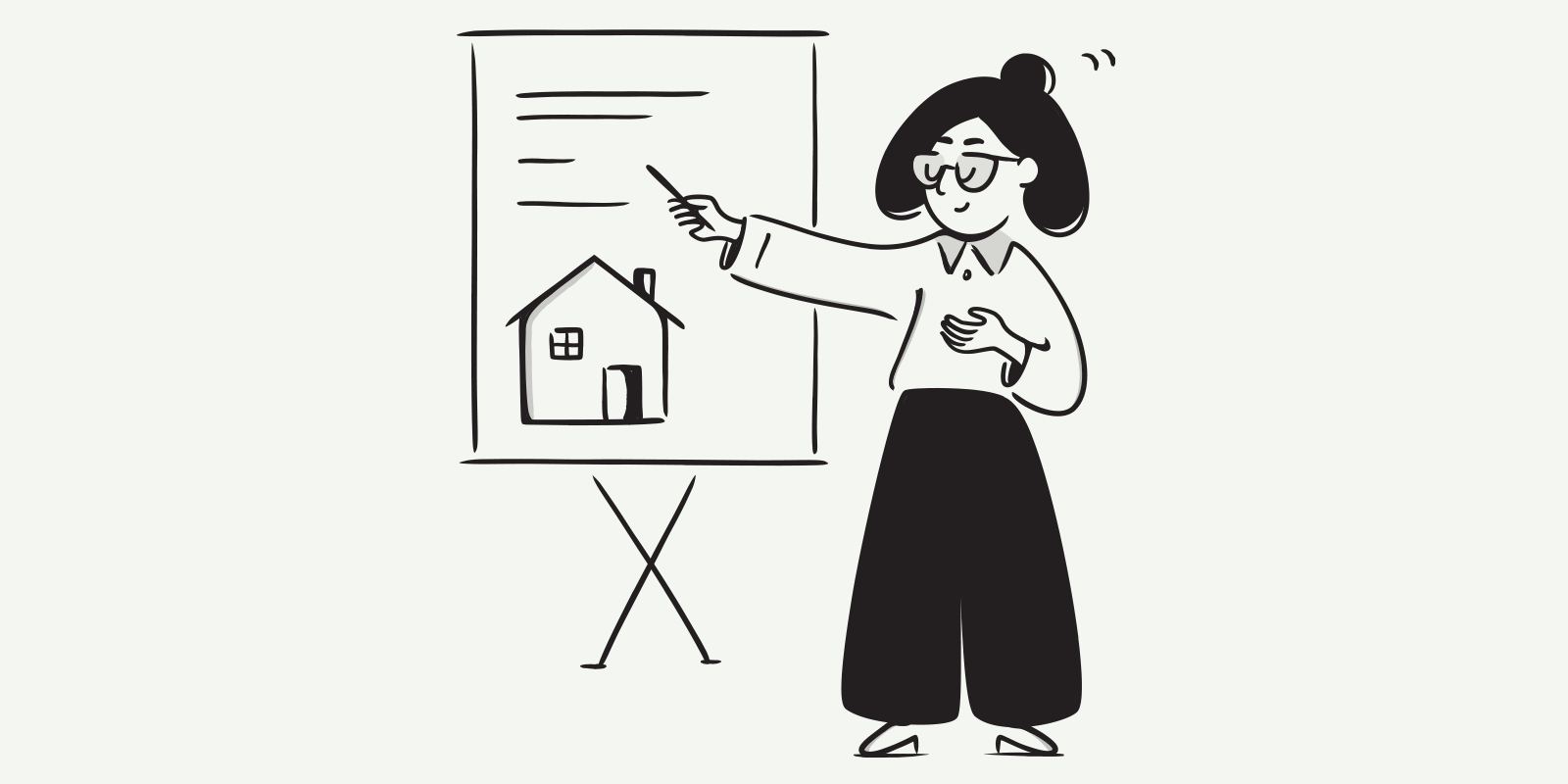The rise of build-to-rent: What it means for private landlords

Build-to-rent is a hot topic in the property industry right now – with concerns growing among private landlords about what this means for the success of their portfolios.
The build-to-rent market is bourgeoning, with investment into BTR reaching £5 billion for the first time in 2024. This isn’t necessarily bad news for private landlords, but it’s a market development to keep an eye on.
In this article, we’re diving into the details of why BTR is attractive to some renters, what it means for private landlords, and how private landlords can adjust strategies to keep up with the changing demands.
What is build-to-rent (BTR)?
Build-to-rent is an accommodation that is built specifically for tenants to rent. The developments are usually large, catering to hundreds of renters, and offer high living standards with modern amenities.
On-site amenities often include things like high-speed broadband, security, entertainment spaces, coworking areas, gyms, bike hire, parking, creches, and communal gardens or roof terraces.
Due to the facilities on offer, the rents typically drive a premium, with an institution managing the properties, communal areas, and all other aspects of the tenancy.
Why is the BTR market growing?
More than 19,000 build-to-rent homes were built in Greater Manchester in the last 10 years, with many major homebuilders committed to delivering more BTR homes in key UK cities over the next decade (source).
In short, the BTR market is growing, with further developments expected to be built in the coming years. Why? A variety of factors have been leading to the surge, including:
- Growing tenant demand:The number of people choosing to rent vs buy is growing, particularly among the younger generation, leading to huge growth in tenant demand
- Focus on quality housing: Quality standards for rental properties have only been increasing in recent years, through legislation (like the Renters Reform Bill) and demand from tenants
- Professional management: BTR developments provide consistent, hassle-free experiences for tenants, which can appeal to young professionals and families
- Flexibility and freedom: Renters often value flexibility, and build-to-rent developments enable them to move between smaller and larger properties easier than if they were privately renting
- Government support: In some areas of the UK, BTR is being incentivised to address housing shortages, leading to more big names investing in these types of developments
What’s the impact of the rise in build-to-rent properties on private landlords?
Any change to the housing market can affect private landlords, from new housing developments being built to changes in quality standards for rental properties. The growth of the build-to-rent market is no different.
Read more about how build-to-rent can affect private landlords.
Increased competition
BTR developments usually contain multiple rental properties in one area, typically in a city. A private landlord converting a home to a buy-to-let increases the rental supply by one, but a new BTR development can increase the supply by hundreds or even thousands.
This can increase competition for private landlords. Plus, with BTR developments offering perks to renters (like gyms, coworking spaces, and concierge services), this can make it harder for private landlords to attract tenants unless they invest in similar upgrades or offer competitive rents.
Target market shifts
BTR developments tend to appear in ‘major’ cities. For example, London, Manchester, Birmingham, and Leeds already have BTR homes, while new developments are underway in places like Bath, Brighton, Oxford, Cambridge, Cardiff, and Guildford.
BTR primarily targets young professionals and families in urban areas like these. This means private landlords operating in these markets may see tenants switching to BTR instead.
In turn, this can mean that some private landlords may need to adjust their approach to compete or focus on other niches. For example, providing affordable housing or student lets.
Rent levels and market share
As mentioned earlier, a BTR development cropping up in your city can significantly increase the rental supply near you. This can disrupt market rents for landlords.
For example, if the increase in available homes leads to an oversupply, it can stabilise or even lower rent values in certain areas. With there being an undersupply in most UK cities in 2025 (which has, in turn, been driving up rents), this can be the end of rent inflation in some areas.
For landlords with smaller portfolios, the stabilisation or lowering of rental rates can impact profitability or even stability significantly.
How can private landlords respond to BTR: What are the opportunities?
The rise of build-to-rent developments can cause significant disruption in the city where your property portfolio lies, but – like all changes to the property market – it isn’t all doom and gloom.
Private landlords have the opportunity to differentiate themselves and adapt to keep profit margins alive. Several tactics to explore include:
Offering flexible terms
Private landlords (particularly those with one or several properties) have a unique opportunity to focus on tenant personalisation. BTR developments lack this flexibility, which gives private landlords the edge.
For example, you can offer flexible terms per rental and tenant, such as allowing pets, shorter lease terms, variable payment due dates, and other bespoke offerings.
These can become key selling points for private landlords, which can make your rental more desirable in areas where BTR developments exist. Remember to protect yourself and your rental property when offering bespoke changes, e.g., with effective landlord insurance.
Focusing on tenant experience
Consider providing a good tenant experience to retain your lettings or attract new tenants when there’s a vacancy. For example, you could invest in modern appliances, garden amenities, or energy-efficient systems.
While you may not be able to match the level of service provided in a BTR development (e.g., with an onsite café or gym), there are other things you can offer tenants that provide a higher quality living experience.
Leveraging technology
A key reason why tenants choose a build-to-rent property is because of the ease of management. Dealing with a landlord over text or via a phone call isn’t always the preferred option for tenants.
This is particularly important when you consider the data that over 70% of millennials and Gen Z (people aged 18-44) prefer digital communication over phone calls, with 25% saying they never answer the phone at all.
Private landlords can offer a similarly streamlined service as a BTR development by leveraging technology. Using a property management software, like Rentila, can offer tenant conveniences, like online rent payments, maintenance requests, and automated communication.
Exploring niche markets
There’s always a new market to shift to in the rental sphere. If your target market has been young professionals or families who need close city access, these may be the target audience of new BTR developments.
Exploring niche markets can help you manage the new competition effectively. For example, you could cater to tenants seeking affordable housing or under-served groups, such as retirees, students, or low-income renters.
FAQs
Why is build-to-rent so popular?
Build-to-rent is growing in popularity largely because it offers a quality of housing that would be hard to market to the build-to-sell market. The properties fill the ‘gap’ for demand in certain areas from people who want to/have to rent, but want a more ‘luxurious’ living environment.
What are the downsides of build-to-rent?
Despite the benefits, there are downsides to build-to-rent developments for tenants. For example, being new and ‘luxurious’, they often attract premium rent prices, with higher-than-normal service charges to maintain the wide range of on-site amenities.
Plus, they also lack the personal touch, with often more rigid structures and policies that some tenants can find too ‘corporate’. For example, the rent due dates may be inflexible, inquiries may funnel through an online form or call centre (rather than a dedicated person), or the lease terms may be impersonalised.
Why do tenants prefer private landlords vs a build-to-rent property?
There could be lots of reasons why tenants would prefer to rent a property via a private landlord vs a build-to-rent development, including:
- Lower costs: Build-to-rent developments come with extras, which drive a premium compared to renting a property privately
- More independence: Some tenants may view a BTR development as less independent compared to renting privately via a landlord
- Less personal: Renting via a management company instead of a private landlord removes the personal relationship between tenant and landlord, which some renters may not want
- Less flexibility: Private landlords have the opportunity to be more flexible with their terms (e.g., tenants can discuss a change with a landlord and you can come to an agreement), but with a management company, terms are much more rigid and generalised
Things to Remember: Build-to-rent for private landlords
- BTR developments are growing, especially in big cities, and it will likely increase competition, change market share, adjust rent prices, or cause shifts in the target market for private landlords.
- There’s still room for private landlords and BTR developments to coexist. Private landlords can focus on their niche, leverage technology to modernise (like using a property management software), and focus on the tenant experience.
- For landlords who need to pivot, there are different markets to explore, such as retirement rentals, student housing, or homes targeted at people with low-income streams or disability benefits.
- There are downsides to BTR that many tenants won’t find attractive, including premium prices, higher service charges, rigid structures, and a less personalised service.


